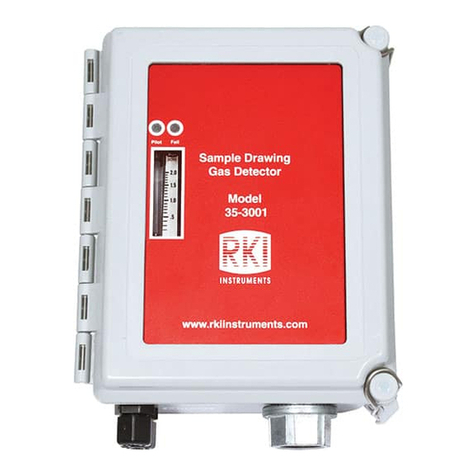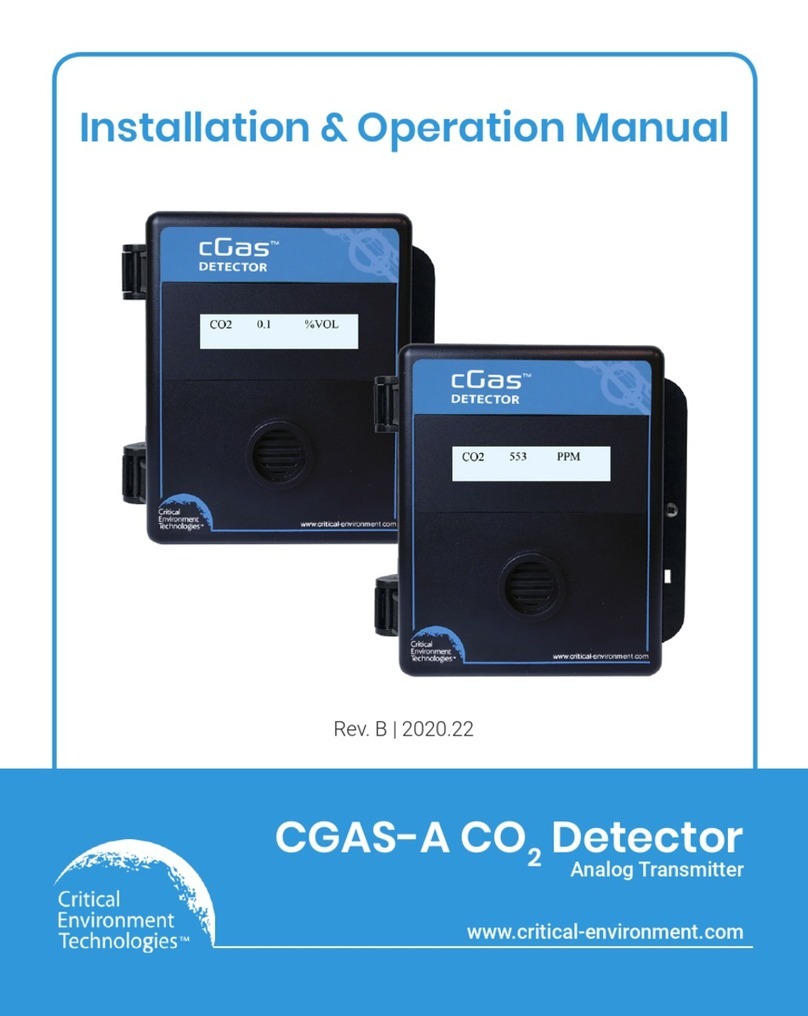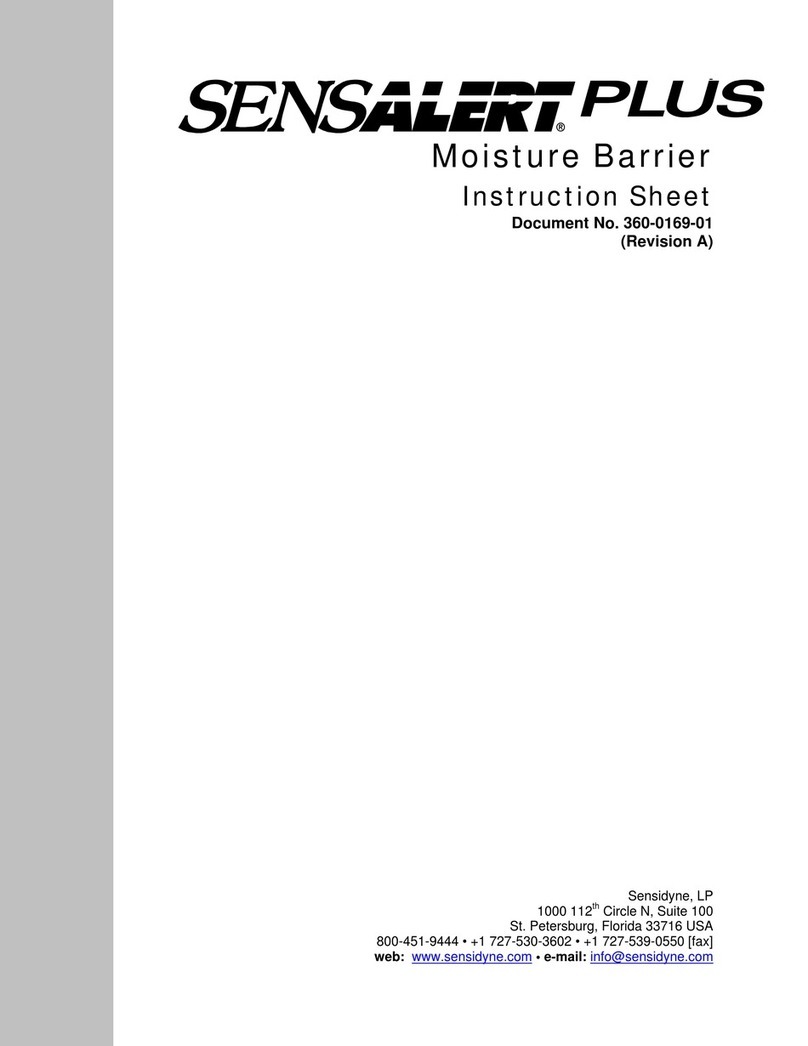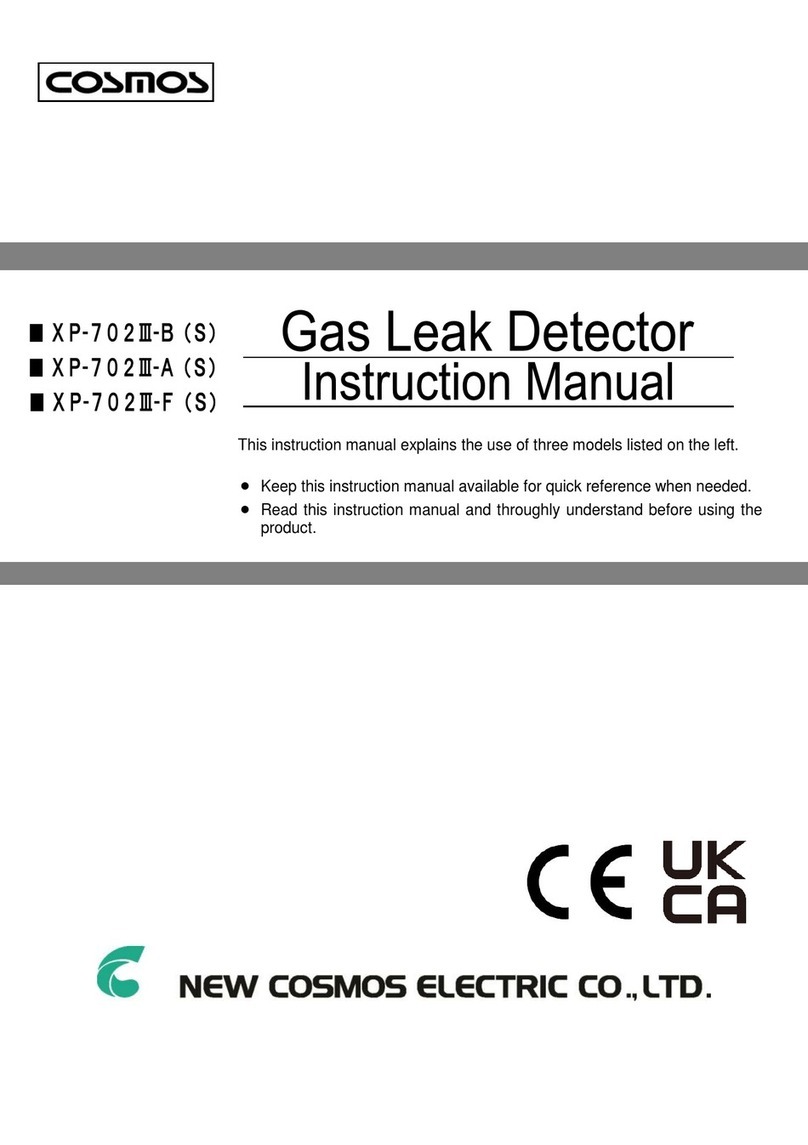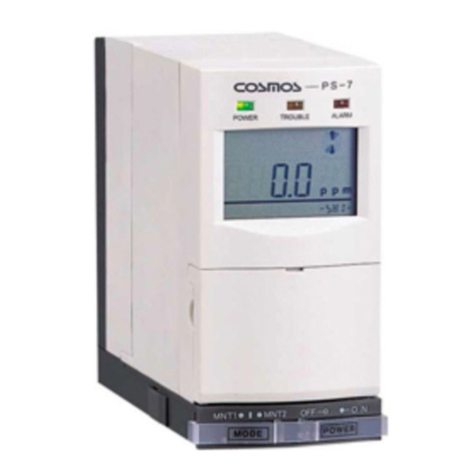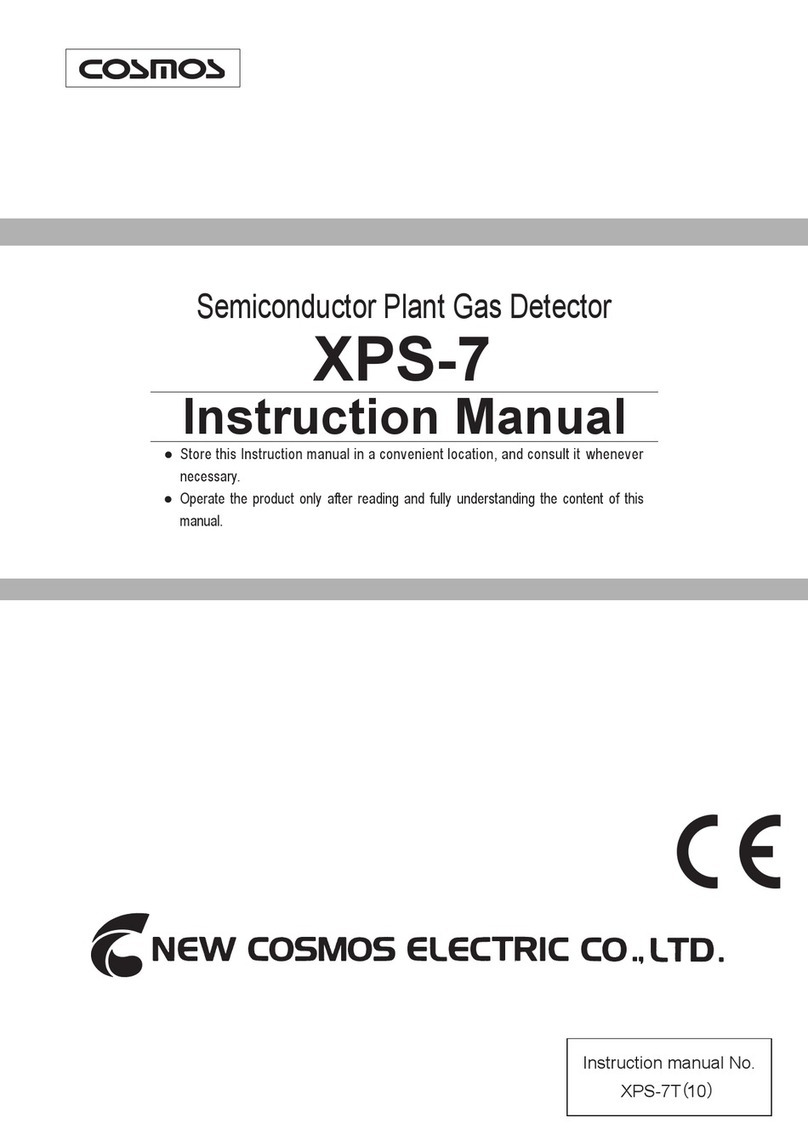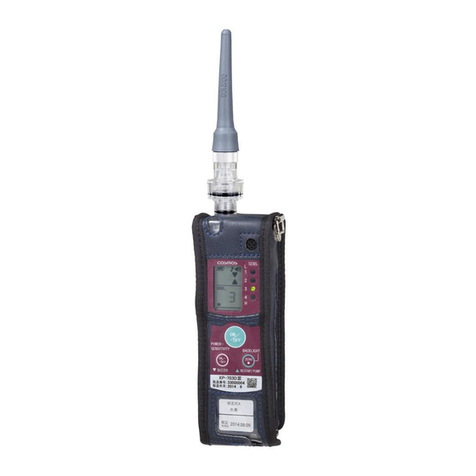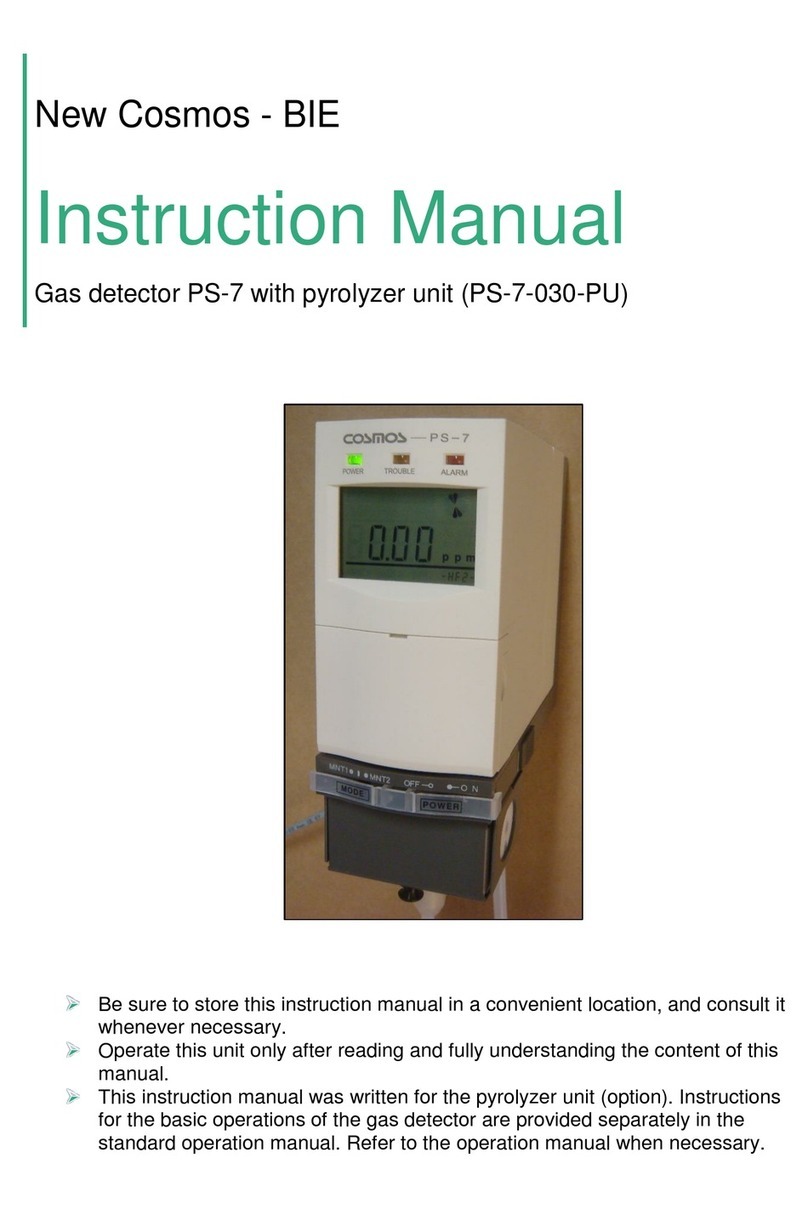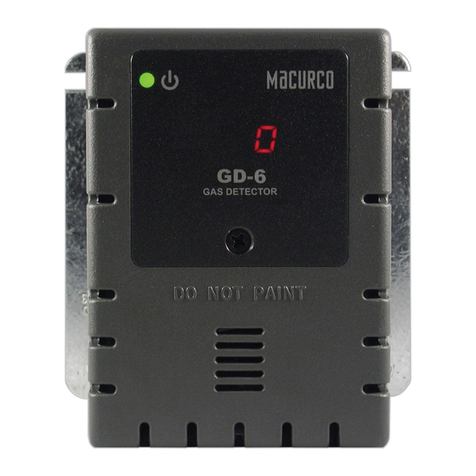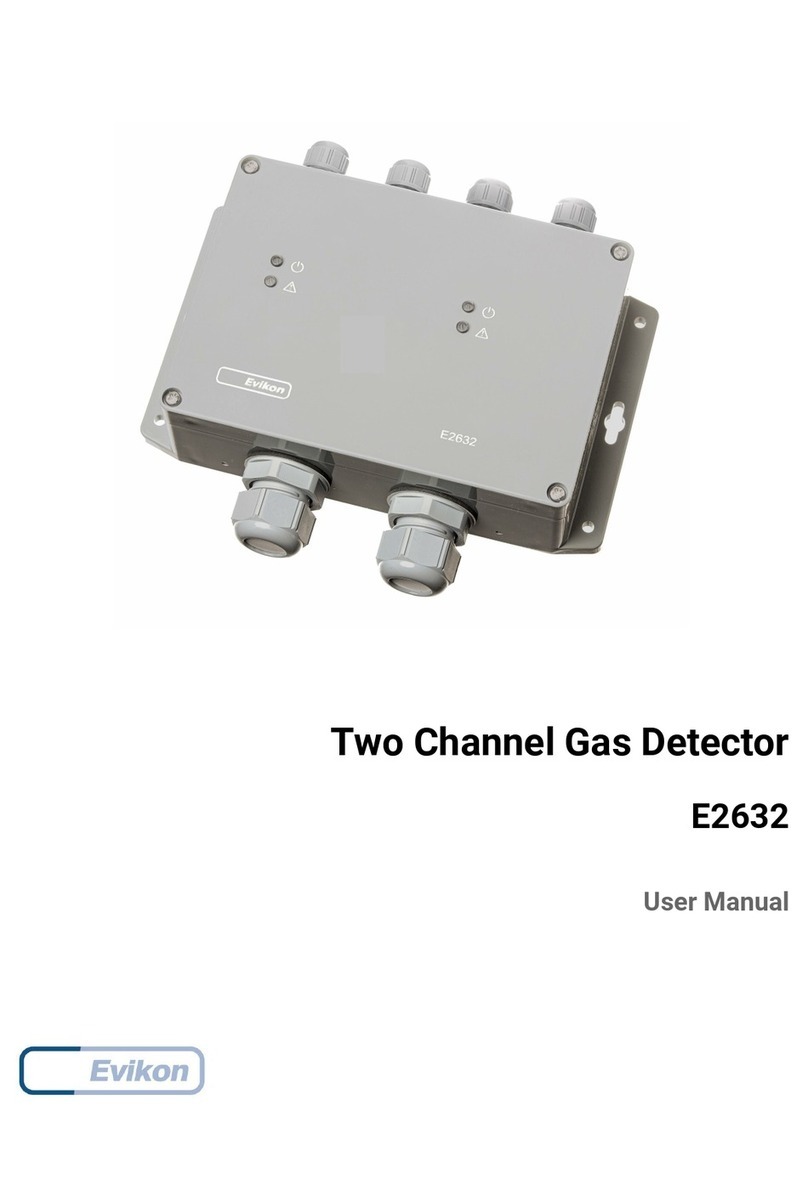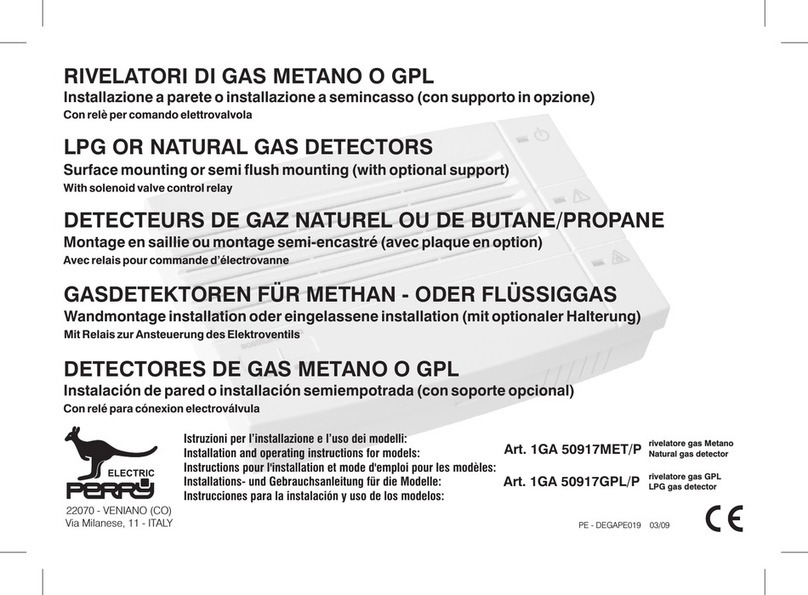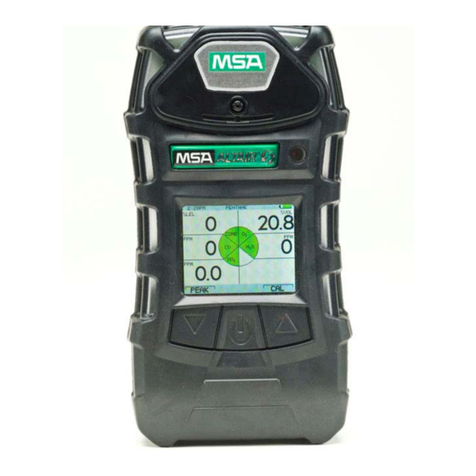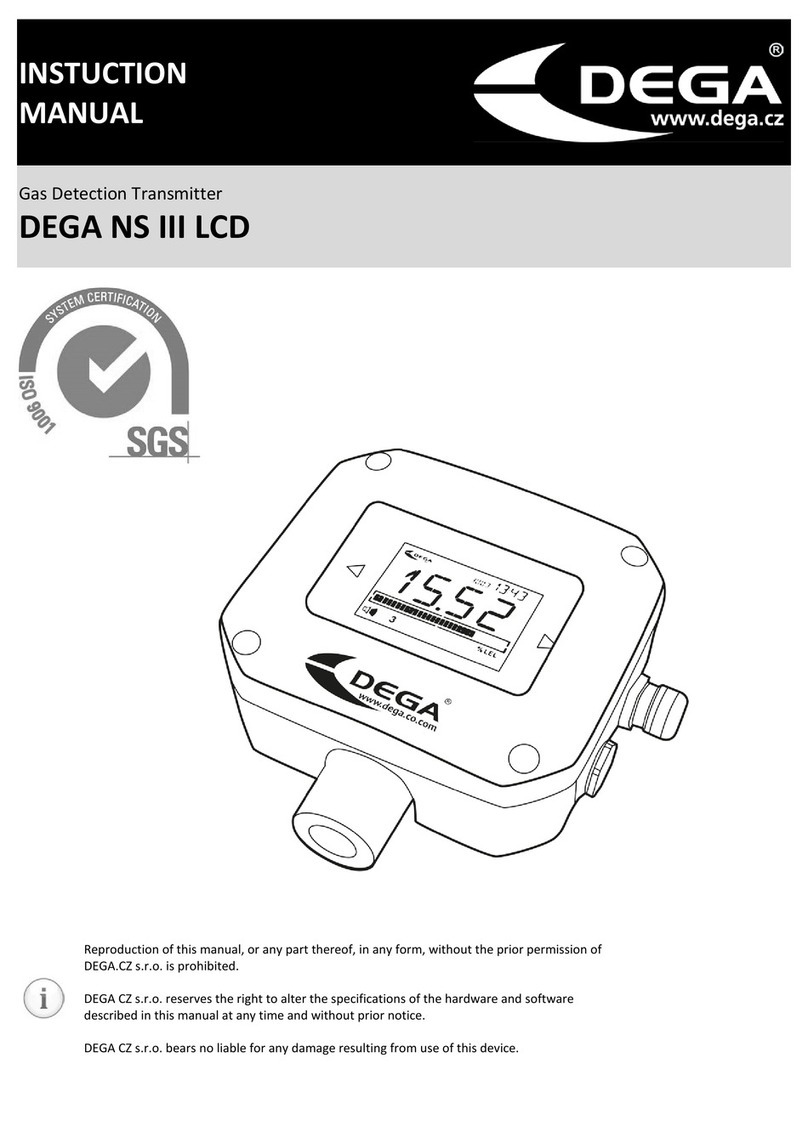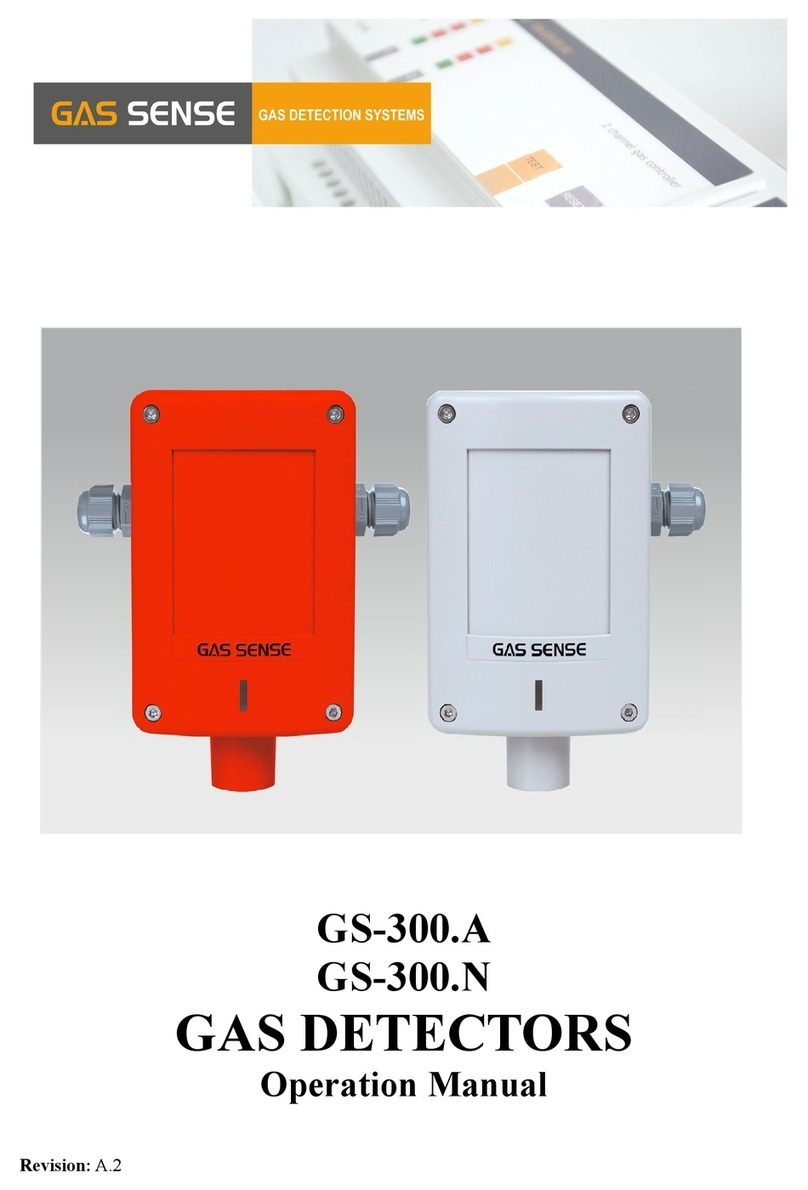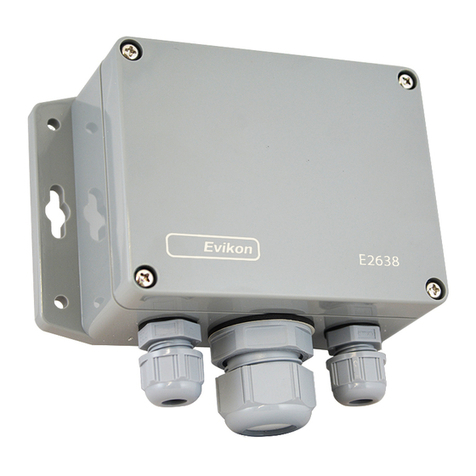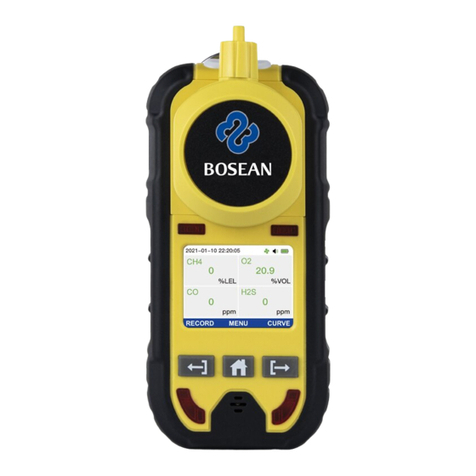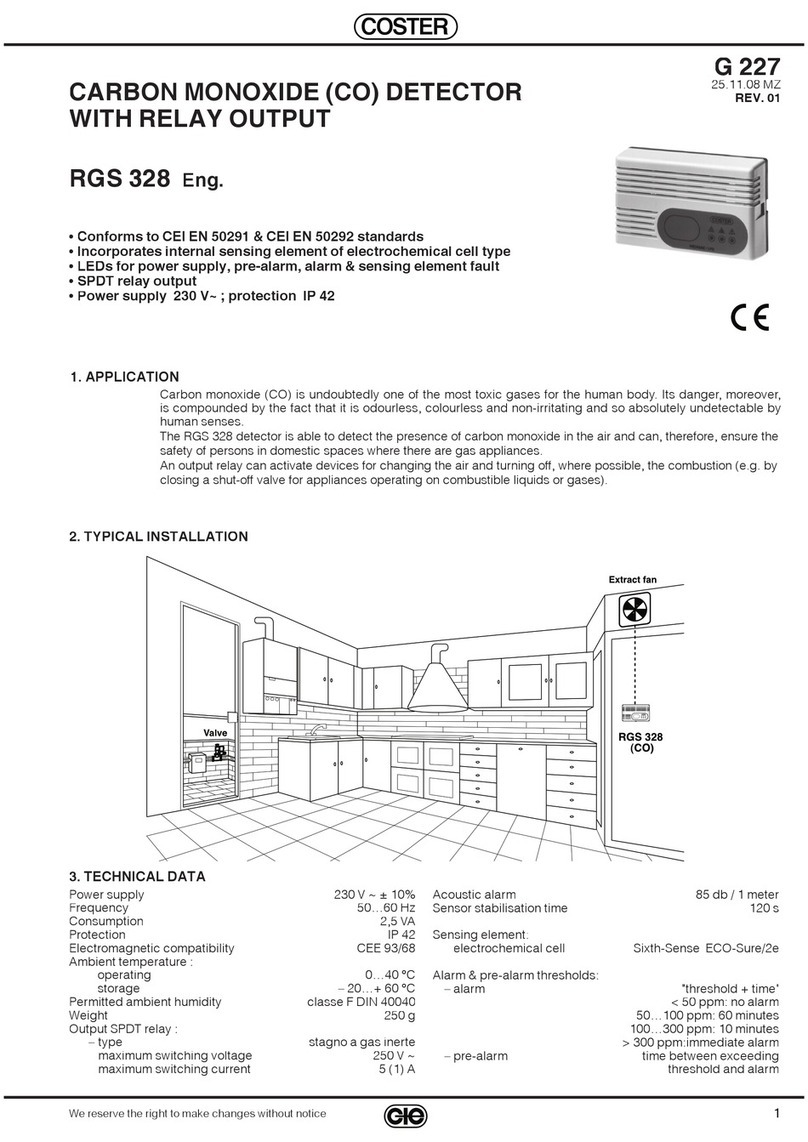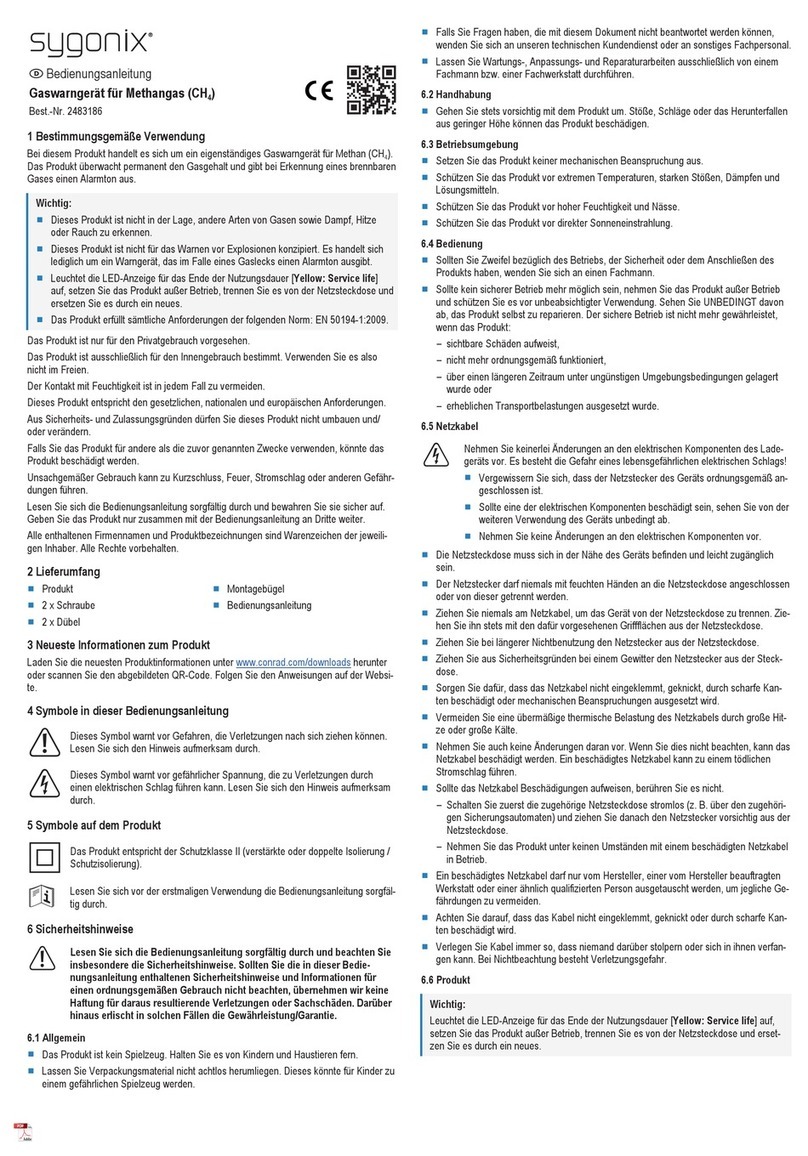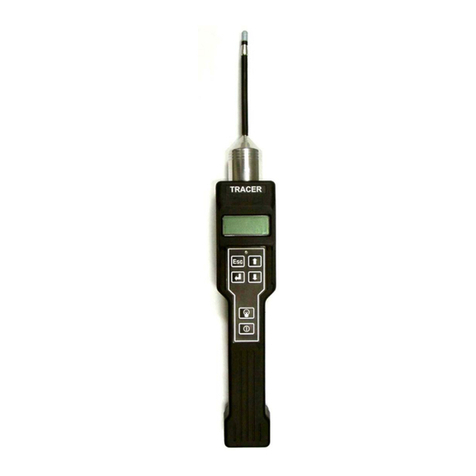
- 6 -
2. Unit Dimensions and Components
Multi-gas Detector
Item Component Description/Function
1 POWER button Used for turning on/off the unit or setting.
2 AIR ADJ. button Used for starting automatic air adjustment, muting audio
alarm, or making settings.
3 Speaker opening Opening for audio.
4 Alarm lights (red) (5 places) Flash when an alarm activates (when target gases are
detected).
5 Infrared port Used for data logging.
6 LCD Displays gas concentrations and settings.
7 Sensor cover For firmly attaching the sensors and filter elements.
8 Gas detection ports (4 places)
(with filter elements)
Gas inlets to the sensor. Filter elements are installed for
preventing the entry of dust/water through the inlets.
9 Battery cover Open/close this cover for battery replacement.
10 Battery unit Used to house a battery and related circuit.
11 Mounting screws Used to attach the safety pin strap to the unit.
12 Manufacturing number sticker Indicates model, serial number and manufacturing date.
13 Explosion-proof sticker Indicates type of protection, certification number and
temperature requirement.
14 Battery case manufacturing
number sticker Indicates model, serial number, and manufacturing date.
15 CE sticker Indicates CE marking and QAN notified body number.
16 Battery case warning sticker
(BP-4000llAL or BP-4000llMH) Indicates warning.
17 Charging terminal
▲
MENU
- 5 -
CAUTION
If this product is to be unused or stored for an extended period of
time, the battery must be removed. Leaving the battery inside
while the product is unused or stored for an expected period of
time will drain the battery and cause it to leak, which will lead to
product failure.
This product is an intrinsically safe device. Do not disassemble,
modify, or alter the structure of this unit or its electrical circuits.
Doing so may impair the performance of the explosion-proof
characteristics.
Do not leave the product in high temperature and/or high humidity
conditions for a long period of time. Doing so may impair the
performance of the product.
Avoid using the product outside the specified operating
temperature/humidity range. Also avoid exposing the product to
abrupt temperature/humidity changes. Failure to do so may impair
the performance of the product.
Avoid rapid changes in pressure. Failure to do so may impair the
sensor performance or may damage the sensors.
Avoid strong mechanical shock, impact or vibration to the product
by dropping or bumping. Failure to do so may impair the
performance of the product.
If you drop or bump the product by mistake then the reading
fluctuates, allow enough time to stabilize the reading before use.
If condensation is present on the product, remove it and make
sure the unit is completely dried and checked for abnormalities
before use.
This detector may detect gases or solvent vapors that are not
target gases. Keep the environment you are using the detector
into consideration.
Do not use the product in a place or near a place where silicone
sealant/vapor may be present. Doing so may compromise the
performance of the product.
Detecting a high concentration of sulfur dioxide or chlorine may
shorten the sensor life or increase errors.
Detecting hydrogen sulfide for an extended period of time may
shorten the sensor life and impair the sensor sensitivity.
Because the oxygen sensor has pressure dependence. Make
necessary pressure adjustments when using the detector at a
place other than sea-level, such as at high altitude.
The gas sensors contain harmful substances. For disposal, return
them to New Cosmos or treat them as industrial waste.
When used at low temperature, the battery life will be shorter than
when used at room temperature due to battery’s characteristics.
Keep the detector away from wireless devices while in use.
Failure to do so may cause a fault alarm or fluctuations in the
reading due to radio wave interference.
The vibrating alarm may be difficult to feel depending on the
location where it is worn.
